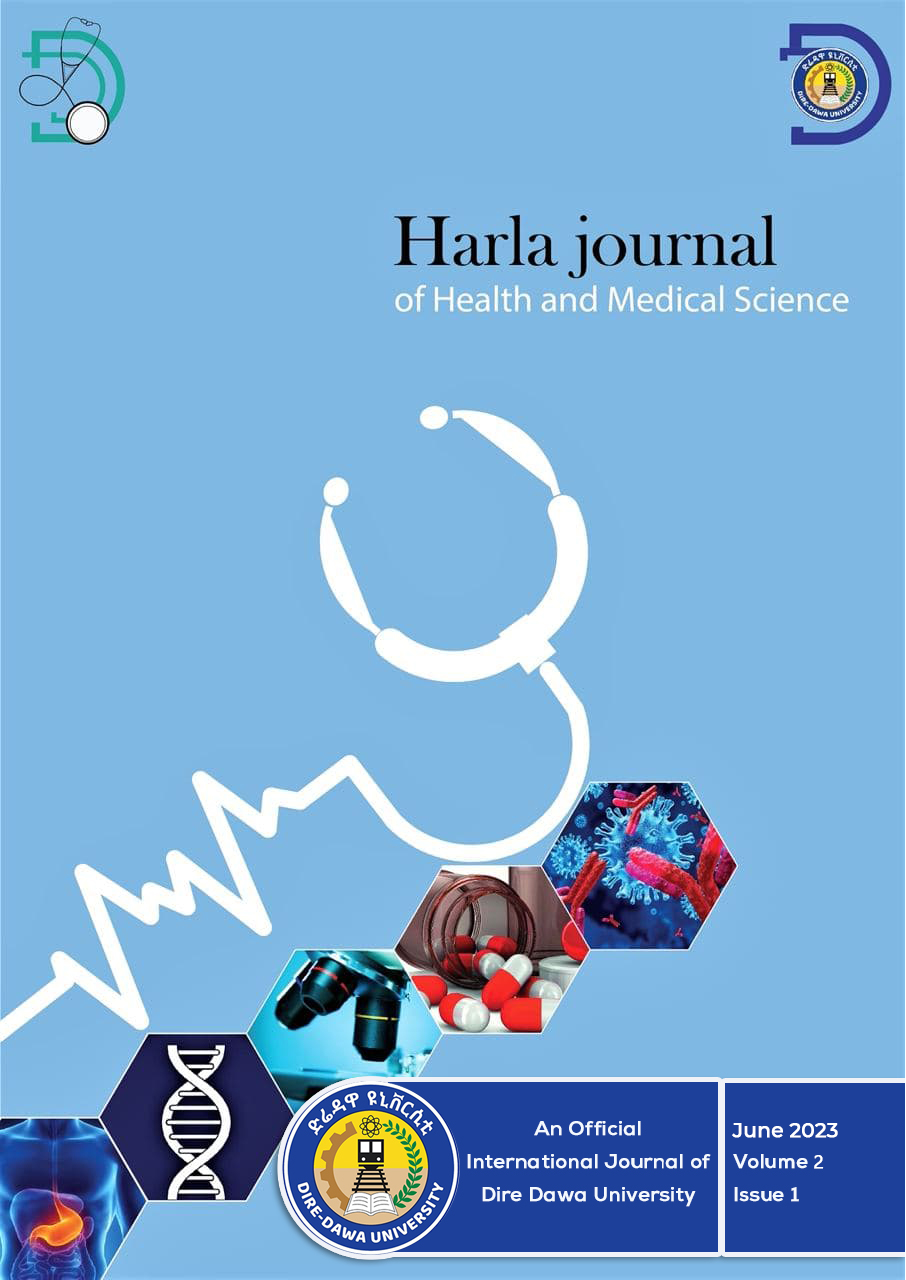Magnitude and Factor Associated with Thinness Among High School Adolescents Students in Eastern Ethiopia:
Neglected Public Health Concern
DOI:
https://doi.org/10.20372/hjhms.v2i1.155Keywords:
Adolescent, Dire Dawa, High school students, ThinnessAbstract
Background: Adolescence is the last chance for curbing the consequences of malnutrition for breaking the intergenerational cycle. Our world is home to 1.8 billion (24.7%) young people between the ages of 10 and 24. In Ethiopia, about 25% of the population are adolescents. However, adolescents are the neglected age group and there is little evidence documented on thinness among school adolescents in Ethiopia, particularly in the study area.
Objective: To assess the prevalence of thinness and associated factors among school adolescents in Dire Dawa city high schools Dire Dawa; Eastern Ethiopia.
Methods: A school-based cross-sectional study was conducted from May 25 to June 10, 2021, among 449 adolescent students selected using a simple random sampling. Data were collected through face- to-face interviews and anthropometric measurements were used to collect the data. The BMI-for-age Z score was calculated using the WHO Anthro-Plus. A binary logistic regression model was fitted with an odds ratio and 95% confidence levels. Statistical significance is declared at a p-value below 0.05. Results: A total of 438 (98.2%) were included in this study. The overall prevalence of thinness was 12.1% (95% CI: 9.1, 15.3). Educational status of adolescent mothers being primary education (AOR= 5.08; 95% CI: 1.50–17.12), having more than five family members (AOR= 3.42, 95% CI: 1.59–7.33), having 1000–2000 Birr family monthly income (AOR= 6.04; 95% CI: 2.17–16.85) were significantly associated with thinness
Conclusion: The study revealed that the prevalence of thinness was high in the study area. Lower maternal education level, having more than five family members and lower monthly income of the family were independent factors associated with thinness among the respondents. Therefore, it would be good to consider the above-mentioned factors during the nutritional intervention of high school adolescents.
Downloads
Published
How to Cite
Issue
Section
License
Copyright (c) 2023 Harla Journals and Author(s)

This work is licensed under a Creative Commons Attribution-NonCommercial 4.0 International License.






